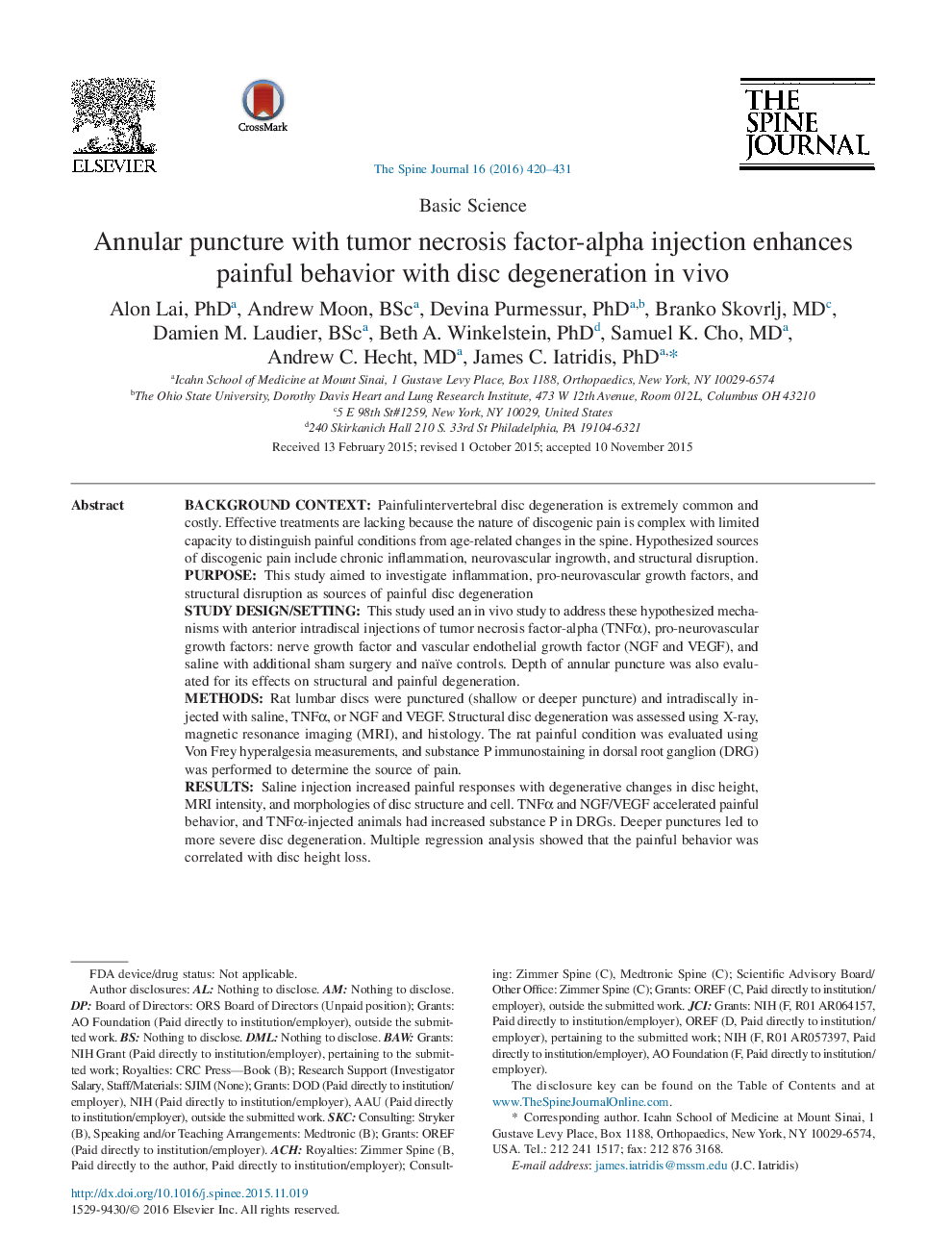| کد مقاله | کد نشریه | سال انتشار | مقاله انگلیسی | نسخه تمام متن |
|---|---|---|---|---|
| 4096303 | 1268556 | 2016 | 12 صفحه PDF | دانلود رایگان |
Background ContextPainfulintervertebral disc degeneration is extremely common and costly. Effective treatments are lacking because the nature of discogenic pain is complex with limited capacity to distinguish painful conditions from age-related changes in the spine. Hypothesized sources of discogenic pain include chronic inflammation, neurovascular ingrowth, and structural disruption.PurposeThis study aimed to investigate inflammation, pro-neurovascular growth factors, and structural disruption as sources of painful disc degenerationStudy Design/SettingThis study used an in vivo study to address these hypothesized mechanisms with anterior intradiscal injections of tumor necrosis factor-alpha (TNFα), pro-neurovascular growth factors: nerve growth factor and vascular endothelial growth factor (NGF and VEGF), and saline with additional sham surgery and naïve controls. Depth of annular puncture was also evaluated for its effects on structural and painful degeneration.MethodsRat lumbar discs were punctured (shallow or deeper puncture) and intradiscally injected with saline, TNFα, or NGF and VEGF. Structural disc degeneration was assessed using X-ray, magnetic resonance imaging (MRI), and histology. The rat painful condition was evaluated using Von Frey hyperalgesia measurements, and substance P immunostaining in dorsal root ganglion (DRG) was performed to determine the source of pain.ResultsSaline injection increased painful responses with degenerative changes in disc height, MRI intensity, and morphologies of disc structure and cell. TNFα and NGF/VEGF accelerated painful behavior, and TNFα-injected animals had increased substance P in DRGs. Deeper punctures led to more severe disc degeneration. Multiple regression analysis showed that the painful behavior was correlated with disc height loss.ConclusionsWe concluded that rate and severity of structural disc degeneration was associated with the amount of annular disruption and puncture depth. The painful behavior was associated with disc height loss and discal inflammatory state, whereas pro-inflammatory cytokines might play a more important role in the level of pain, which might have resulted from enhanced DRG sensitization. These in vivo painful disc degeneration models with different severities of structural changes may be useful for investigating discogenic pain mechanisms and for screening therapies, although interpretations must note the differences between all surgically induced animal models and the human condition.
Journal: The Spine Journal - Volume 16, Issue 3, March 2016, Pages 420–431
